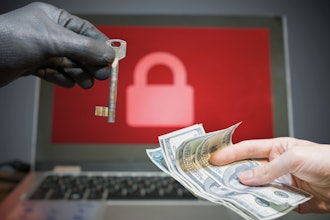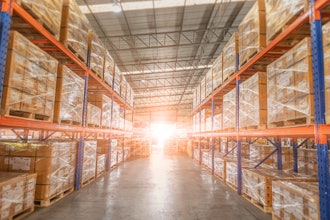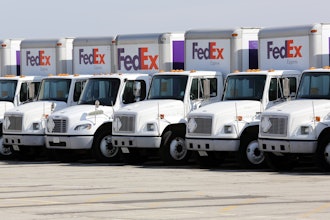Supply chains have gotten to be ridiculously complex, with companies often purchasing from multiple different vendors who may be spread across the entire planet. Furthermore, customers are now more adamant about demanding sourcing information for the products they buy—with the threat of a story about them going viral on social media and tarnishing their reputation, they absolutely do not want to end up buying a product which was sourced in some way unethically. As a result, supply chain managers need a reliable way to keep track of all the individual moving pieces that make up their company’s supply chain. Blockchain may be a viable solution.
What is blockchain, you ask? Blockchain is a method for creating a distributed ledger using encrypted means of transferring data. When data is stored in a blockchain, it isn’t located in one central database; instead, it is spread out across many computers. A blockchain can be used to keep track of any asset. Originally created to record cryptocurrency transactions, blockchain is now being developed by many companies as a data management solution for several different industries. Supply chains, with their heavy need for fast-moving data and large number of organizations involved, may be a perfect use case for blockchain.
One roadblock standing in the way is the standardization of the data being used by supply chain partners. BiTa (the Blockchain In Transport Alliance), the largest commercial blockchain alliance in the world, is working on building a framework on which supply chain blockchain solutions can be created. Their belief is that having a blockchain platform, which all participants in a supply chain use, would speed up processes such as getting freight through customs and handing-off ownership. Having a blockchain platform, they argue, would also improve the bids placing process for transportation companies because there would be a trustworthy way to see which bids came first.
Blockchain solutions improve transparency by giving each organization who uses them the ability to see the data they are housing. This works by making each computer generating a blockchain—or ‘mining’ a blockchain—an integral part of the blockchain itself. When a new transaction on a blockchain platform gets made, it is the responsibility of every computer (or ‘node’) on the network to verify the details of that transaction. Once that occurs, a ‘block’ gets made and added to the ‘chain’ – hence ‘blockchain.’ Since every new transaction gets checked and rechecked, the data is more secure; additionally, since blocks can’t be replaced and are housed in many different locations, it would be virtually impossible for a single party to fabricate or change information. Blockchain would make supply chain reporting more secure.
In addition to enhancing supply chain security, blockchain would also make it easier to verify the origins of individual shipments or products. This would reduce the threat of unethically-produced (or "conflict") materials being used in the production of new products. Barcode scanners and RFID tags in combination with a blockchain platform would make it possible for every shipment along a supply chain to be monitored in real-time. Supply chain managers would be able to trace back individual allotments of raw materials back to their original source, and transportation companies would be able to provide more accurate estimated times of arrival.
Another benefit a blockchain solution would provide a supply chain network is scalability. Relying on a central database to house your data means that your information-sharing capabilities are limited, but with blockchain increasing data availability is simply a matter of adding more computers to the network. Unless Internet access goes down across entire geographic regions, chances are you would never be unable to connect to your supply chain reporting platform if it was blockchain powered. However, with a central database downtime is almost a given.
With globalization on the rise, supply chains (which are already complex) only stand to get more complex. Data housed in a central database is susceptible to fraud, loss, and network unavailability. Integrating blockchain into supply chain reporting would make it more transparent, since every organization involved would have access to the information. Furthermore, having every partner along a supply chain using a blockchain platform would mean that every shipment, transaction, and problem could be instantly seen by whomever it effects. Once the code is written, all these benefits would cost is a little processing power for each computer—or, potentially, smartphone—that a supply chain partner owns.
Ken Gibson is a Data Analyst at Black Ink Technologies, which helps the premier manufacturing industry sell more, faster and smarter. The SaaS platform provides more visibility across the entire supply chain—from a manufacturing plant, to distributor, to territory managers, to dealers, to the local marketplace. Black Ink combined the best of CRM, business intelligence, geo-mapping, data management, industry-specific data, and pre-built library of statistical models in one easy to use, and affordable platform. This helps accelerate customer acquisition and customer relationship management—and that helps the OEM, their distributors and the dealer grow. For more information, please visit https://blackinktech.com/ and connect with @BlackInk_Tech on Twitter, Facebook, and LinkedIn.























